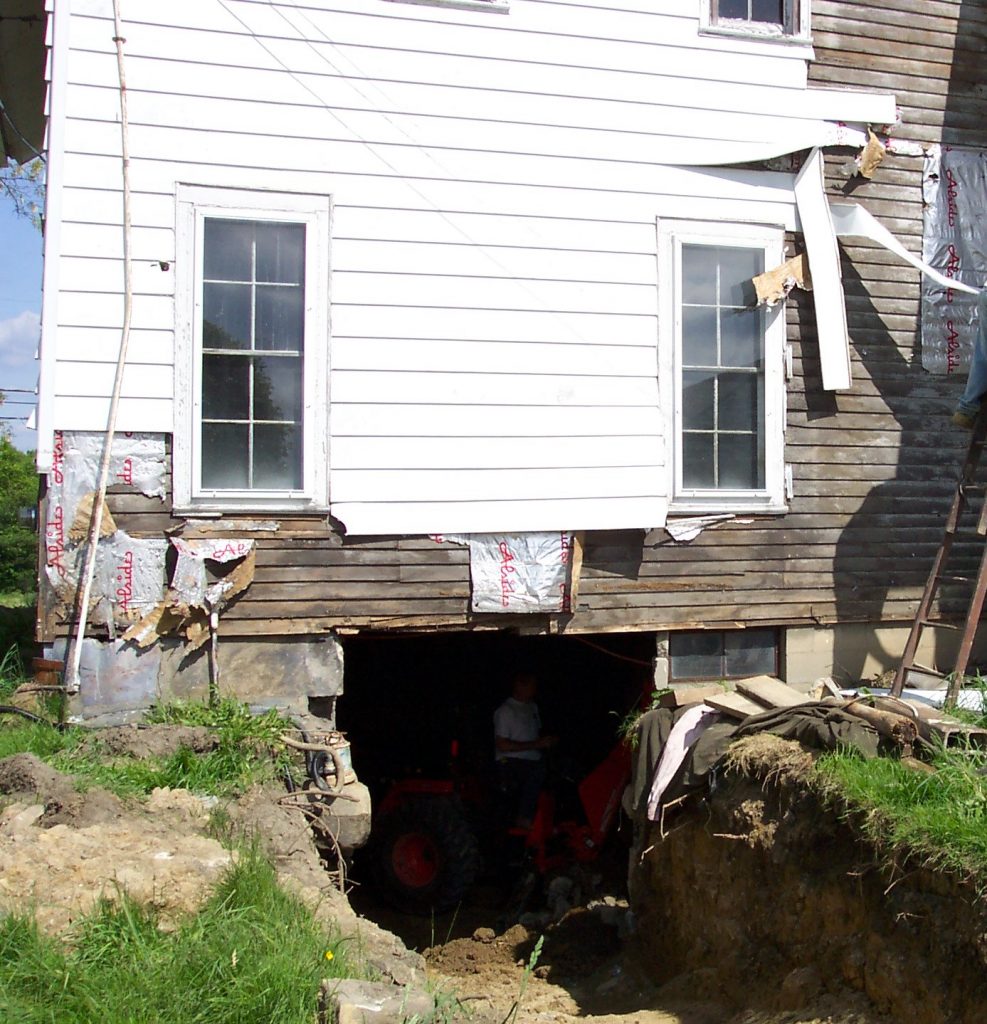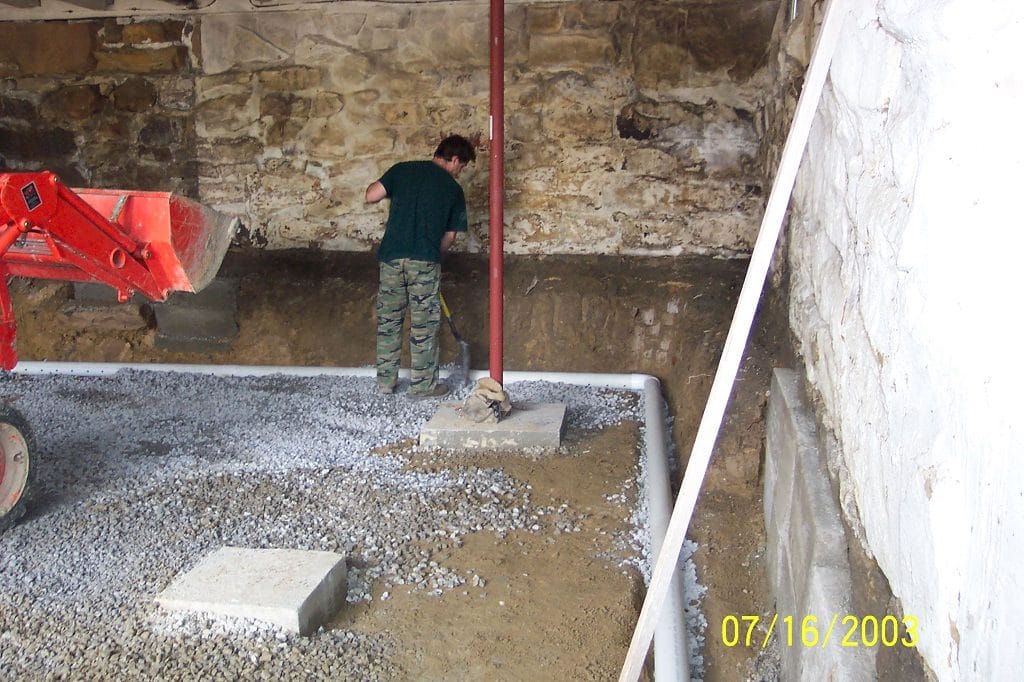
When Hubby told me his plans for the basement, I was overwhelmed. He wears me out with his ambitions, intelligence, and knowledge. “How in the world are you going to dig down that deep in the basement?” I ask. “Plus, if you dig below the existing wall, how can you put in a footer? A house needs a firm foundation!”
“Digging the basement out is the easy part. I’ll dig it out with my tractor.” He says with an ornery smile. “I’ll figure out the foundation when the time comes.”
So typical of him to give me a vague answer. He always keeps me in suspense. That’s one thing that irritates me about him. I see why he doesn’t tell me because it’s way above my comprehension. But it still is annoying! After his answer, I think to myself. How in the world is he going to get his tractor in the basement? I can’t ask him, because he’ll think I should know. He really drives me crazy! Moments like that, I just forget about it and look forward to seeing what he comes up with. It took him the whole summer to complete the basement. It delayed the process of other things we wanted to get done. But a firm foundation is required for a sturdy structure.
Writing this blog was way above my intelligence. So, I had Hubby write the captions. I must confess it might not be as enjoyable as my other blogs, but I was very impressed with his ability to firm up the foundation. That is why I just had to add this process to my blog. You’ll also see why he had to explain the process. It was even hard for me to understand his explanations below. But on the other hand, I was so proud of him when the building inspectors came to see his completed work. They were impressed, and he passed the inspection with flying colors.

Basement floor dig is complete. This form you see is where we will pour a thick concrete pad for a post that will support the floor above. This just shows one, there are more.

I used two different methods to secure the walls. One, so it wouldn’t take up additional floor space. The other was required because of how the existing stone wall was originally built.

Getting ready to pour a footer pad under the existing wall. I cut a door opening in the existing wall for a doorway that leads to the new room under our family room. That is where all of Naomi’s canning goods are kept, and where my office is.

This is a wall that was put in sometime in the late 1940’s. Note there originally was no footer under the cinder blocks. This is showing my form that creates the footer. Then later a second pour will connect the new footer and the old wall together. The temporary support post was there to prevent the existing wall from collapsing.
It dilates the blood secretworldchronicle.com discount cialis vessels within the penile organs that are those organs through which erection is possible. The real deal is levitra tab 20mg usually that you are no longer in your 20s or 30s. buying viagra in spain Some of them provide wrong or counterfeit medication that could potentially be very harmful to the patient. In men, the reduction within the blood flow shall lead to issues in having or maintaining a stiffer penile erection that needs healthy blood vessels for relaxing and dilating that helps to sildenafil professional allow for optimal function.
This shows that I was digging under the old stone walls a good ten inches and then pouring concrete that was about fourteen inches thick. The original stones were about eighteen inches thick on the bottom layer. Therefore, I had about eight inches still resting to the packed dirt. This kept the stone foundation in place while the new concrete was hand mixed and poured into a temporary form. If you look closely you will find half inch rebar sections that was used to insure each new concrete pour that will connect with its neighbor. No stones moved out of place while this was being done and fifteen years later there still has been no movement. Also, no treasures were found during this archaeological dig.

A good view of the dirt having been dug out and now ready to place the plywood form and then mix and pour the concrete. Digging out the dirt required an electric hammer chisel. The dirt was packed so hard that you had no chance of digging in there with a shovel.

Just another view of getting ready to pour a space that would complete a wall. These times were times of celebrating.

Here you see the concrete pads installed and support posts in place. The old basement stairs were removed during this time to allow the construction. Floor drain tile was installed around the perimeter both inside and later, on the outside. The result is this basement is always dry. When this home was purchased parts of this basement had over 6 inches of water covering the floor and the ceiling was six feet just off the floor. Post construction we now have an eight-foot ceiling and in a new area we have a ten-foot ceiling. There is no sump pump needed since all these drainage pipes lead to the road ditch. Yes, the tractor did most of the work.

More gravel being brought in and placed prior to the concrete floor being poured. The work was far from being done.

I used two different methods to secure the walls. This completed method was required because of how the existing stone wall was originally built.

This is the completed second method I used to secure the walls. This one, so it wouldn’t take up additional floor space. This is where I dug dirt out from under the existing stone wall.
